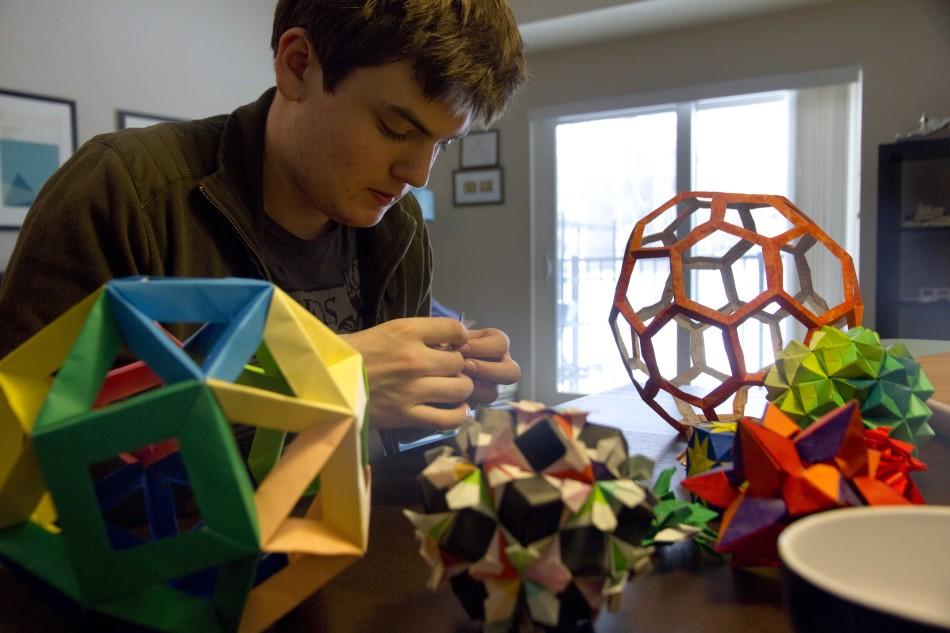Beginning with a fold
Junior Elliot Schwartz makes basic two dimensional paper into forms of creativity. Schwartz focuses on tessellations, which are repetitive shapes creating a pattern. He expresses his mathematical personality through his work
March 26, 2014
When and why did you start origami?
I was in the TREK program, a combined fifth and sixth grade at Susan Lindgren. We did not do anything significant most of the time. We just went to recess and then we had art time. So during art time one of the things we did was origami.
What is your favorite origami to make?
I really like tessellations. Tessellations are like a puzzle except all the pieces are exactly the same. So you have a bunch of individual units that are all symmetrical and the units all fit together without any holes or gaps.
Do you see yourself as an artist or a craftsman?
I see myself as a craftsman because you’ve always working toward an idealized form. I dream of folding with truly two-dimensional paper because it would be different. It’s an imperfect medium, and I try to convey perfect forms. I’m always working toward an ideal.
How do you express yourself through origami?
I think I’m a very mathematical and geometric person. I’ve always enjoyed math. Here is funny anecdote. In health last year when they asked us what was beautiful, they were talking about physical beauty. I said math and the health teacher got mad at me because she thought I was being sarcastic, but I wasn’t.
What lessons about life have you learned from origami?
Don’t give up. I’ve been working on a big modular design. I’m talking like 120 units, and I’ve worked hours on this. I’m just trying to put it together, and it’s falling apart. I just gotta keep going. You just gotta keep going.
What’s your next big project and what is different about this project?
I’m working on projecting some of the Platonic and Archimedean solids onto spheres. Like Buckminster Fuller did with the dodecahedron. It’ll be interesting. It’s like working with more organic forms contrasted with cubic. I also think it’ll be structurally stable, which I like.
Who are M.C. Escher and Buckminster Fuller and how do they influence you?
M.C. Escher was a print maker. He does very simple beautiful art of various forms transforming into other forms, but everything fits together. Like you will have a fish transforming into birds, and its all very rooted in tesselations. Buckminster Fuller was an architect predominantly and also sort of an inventor. He really worked with making forms as stable as possible. He used a lot of Platonic solids and Archimedean solids to accomplish that, and I use a lot of those forms in my origami.
What’s your proudest achievement?
I made an eight intertwined truncated tetrahedron. It kind of looked like a Christmas tree. Also, for “A Midsummer Night’s Dream” in English last year, I made the set so it had 100 origami flowers on vines. I made crowns for Oberon and Titania, and a rose.



